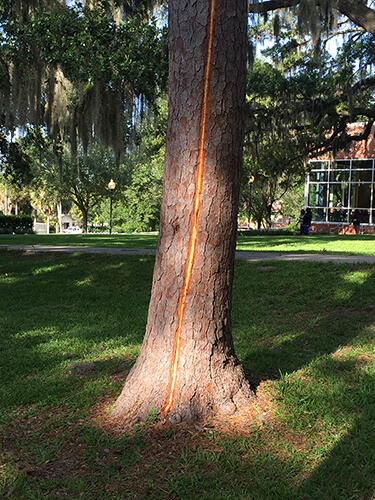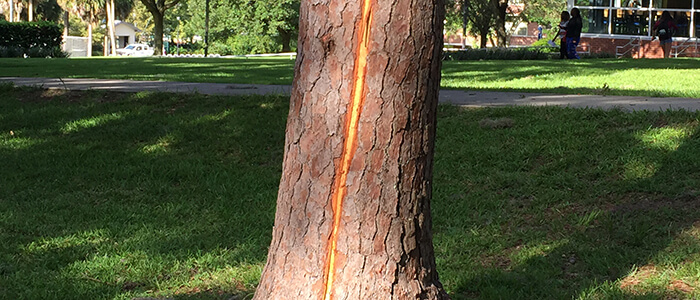Lightning Damage to Trees

Florida-Friendly Landscaping™ in a Minute
Episode Archive
Episode #86 | Original Air Date: June 29, 2020
Related Resources
Transcript
Florida is known for its intense thunderstorms, and lightning can cause damage to trees.
Tall trees are the most susceptible to lightning strikes.
As lightning travels through a tree, it causes sap to boil and cells to explode. The damage often appears as a line of discolored bark or loose bark that hangs from the trunk or branches.
Root damage is also possible but is more difficult to recognize.
If you suspect lightning damage, try to minimize future stress to the tree. Depending on the extent of the damage, the tree may die suddenly or slowly, or it may even recover.
Keep the soil moist to give the tree the best chance.
Florida-Friendly Landscaping™ in a Minute is a production of the University of Florida’s Florida-Friendly Landscaping™ Program, IFAS Extension, and WUFT-FM in cooperation with the Florida Department of Environmental Protection.

